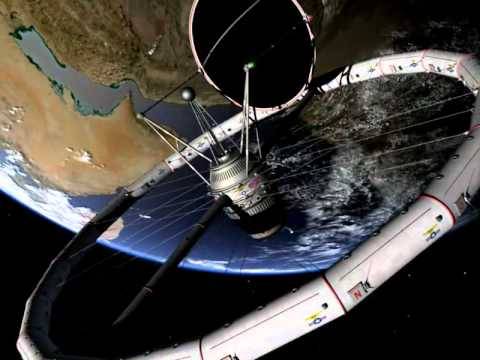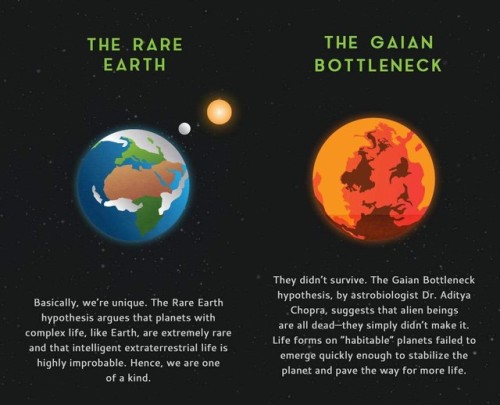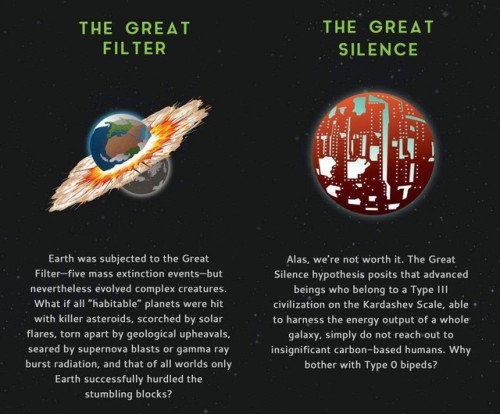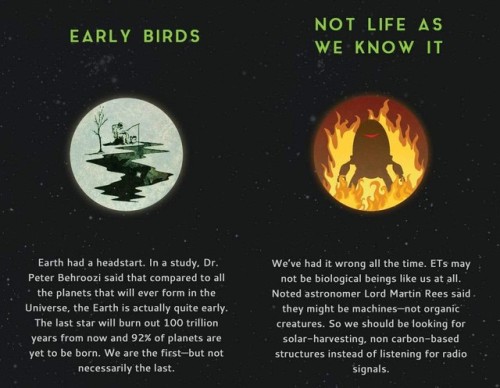"When Shelley's Corpse Washed Ashore, A Friend Identified It By A Copy Of Keats's 1820 Volume In The
"When Shelley's corpse washed ashore, a friend identified it by a copy of Keats's 1820 volume in the coat pocket, which he knew Shelley had taken with him. Then, after cremation in which Shelley's heart, hardened by calcium, did not burn, this same friend snatched it from the embers and presented it to Mary Shelley, who kept it thereafter in her desk, wrapped in a copy of 'Adonais."
Here’s your morbid literary fact of the day.
More Posts from In-pursuit-of-knowledge-blog and Others
Technology for the blind!
NSF-funded researchers at Texas A&M University have developed STAAR (Situated Touch Audio Annotator And Reader) e-reader that enables blind readers to read the same text sighted readers do. The system allows a user to scan the text with their fingers to hear the words. For more information: https://bit.ly/2Fm1HSU
Video credit: Texas A&M University






1945-1952 - Space Station by Wernher von Braun - Von Braun was a leading aerospace engineer first in Germany until 1945, and after being captued by U.S. forces in the same year, he continued working for NASA in U.S. He made United States able to develop the Saturn/Apollo program, making humans landing on the moon. The pictures here by NASA show one of Wernher von Braun’s fantastic plans, designing a space station for humans. NASA said that “(Wernher von Braun is) without any doubt the greatest rocket scientist in history”. For further details on the space station, please study the following link, adding a lot of details to this concept: http://www.astronautix.com/craft/vonation.htm. The following quote is as well from that website: “In the first 1946 summary of his work during World War II, Wernher von Braun prophesied the construction of space stations in orbit. The design, a toroidal station spun to provide artificial gravity, would be made very familiar to the American public over the next six years. The design was elaborated at the First Symposium on Space Flight on 12 October 1951 at the Hayden Planetarium in New York City. The design was popularized in the series in Colliers magazine, illustrated with gorgeous Chesley Bonestell painting, in 1952. The 1946 version used 20 cylindrical sections, each about 3 m in diameter and 8 m long, to make up the toroid. The whole station was about 50 m in diameter and guy wires connecting and positioning the toroid to the 8 m-diameter central power module. This was equipped with a sun-following solar collector dish to heat fluid in a ball-shaped device. The heated fluid would run an electrical generator. Presumably visiting spacecraft would dock or transfer crew at the base of the power module.”

Cotton Rat Skull
My first rat skull, found it in Florida all dried up next to our condo. Judging by the fur color, fur texture, and S shaped molars I THINK its a hispid cotton rat. There were a few of these little guys running around and they didn’t look like normal rats to me. But idk, there’s really no way for me to tell for certain just by skull measurements. I’m not quite that good at bone identification yet.

Southern sea otter recovery has come a long way, but there’s still work to be done. 🐾
I remembering being at the Monterey aquarium a few times and I recall it's repurposed from a cannery. Does the aquarium have a book of the building's history? I'd love to buy it and read up on the local history.
It’s true! The Aquarium stands on the site of the former Hovden and Sea Pride canneries. Here’s a brief history of the Aquarium. For a longer read, this book delves into the history of Monterey Bay, including the Aquarium!
The canneries are an important part of Monterey Bay history and you can find tributes to them throughout the Aquarium, including the smokestacks on the roof and the boiler exhibit in the atrium.

The smokestacks! They’re now sealed and primarily used as a perch by peregrine falcons searching for prey.

Restored boilers—fish would be cooked in these as part of the canning process.

Old Hovden Cannery building as seen from Hopkins Beach in the late 60′s. (📷: Mark Silberstein)

Same spot today! The Aquarium building incorporates some of the original structures and style of the canneries. You can read more about the architectural design of the Aquarium here.
How 250 Siberians Became the First Native Americans

The Americas are a big place, but the Native American group that first settled it was small — just about 250 people, according to a new genetic study.
These people, known as a founding group because they “founded” the first population, migrated from Siberia to the Americas by about 15,000 years ago, said study co-lead researcher Nelson Fagundes, a professor in the Department of Genetics at Federal University of Rio Grande do Sul, in Brazil.
Figuring out the size of founding groups is key, because it determines the amount of genetic diversity that gets passed on to the group’s descendants, Fagundes said.
That, in turn, could alter how effectively natural selection weeds out bad genes, Fagundes said.
“Large populations have very efficient selection, while in small populations, mildly deleterious alleles [versions of genes] can spread, which may increase genetic susceptibility to some diseases,” Read more.

Sharpless 249 and the Jellyfish Nebula
Image Credit & Copyright: Albert Barr
Love astronomy, space, and other science stuff?
Get them directly into your inbox on a daily basis by subscribing to our mailing list. Click the following link to subscribe: http://bit.ly/subscribetobeautyaboveus

-
 kippos liked this · 2 weeks ago
kippos liked this · 2 weeks ago -
 crabbylazypanda reblogged this · 2 weeks ago
crabbylazypanda reblogged this · 2 weeks ago -
 holochromatic liked this · 1 month ago
holochromatic liked this · 1 month ago -
 luminoussphereofplasma reblogged this · 1 month ago
luminoussphereofplasma reblogged this · 1 month ago -
 catsbatsntatts reblogged this · 1 month ago
catsbatsntatts reblogged this · 1 month ago -
 ionianstar reblogged this · 2 months ago
ionianstar reblogged this · 2 months ago -
 ionianstar liked this · 2 months ago
ionianstar liked this · 2 months ago -
 halfassaultedbrain liked this · 2 months ago
halfassaultedbrain liked this · 2 months ago -
 gentlepeech liked this · 2 months ago
gentlepeech liked this · 2 months ago -
 wildjuniperjones liked this · 2 months ago
wildjuniperjones liked this · 2 months ago -
 timothy06-24 liked this · 3 months ago
timothy06-24 liked this · 3 months ago -
 burrito-me-batman liked this · 3 months ago
burrito-me-batman liked this · 3 months ago -
 hai-uri liked this · 4 months ago
hai-uri liked this · 4 months ago -
 theghostsensation liked this · 4 months ago
theghostsensation liked this · 4 months ago -
 et-novum reblogged this · 4 months ago
et-novum reblogged this · 4 months ago -
 dexter99 reblogged this · 4 months ago
dexter99 reblogged this · 4 months ago -
 dexter99 liked this · 4 months ago
dexter99 liked this · 4 months ago -
 buckydunpun reblogged this · 4 months ago
buckydunpun reblogged this · 4 months ago -
 fenmere liked this · 5 months ago
fenmere liked this · 5 months ago -
 courtofdolls reblogged this · 5 months ago
courtofdolls reblogged this · 5 months ago -
 oxidizedvertebrae liked this · 5 months ago
oxidizedvertebrae liked this · 5 months ago -
 nerdythangs reblogged this · 5 months ago
nerdythangs reblogged this · 5 months ago -
 vaithne reblogged this · 5 months ago
vaithne reblogged this · 5 months ago -
 misscharlotte68 reblogged this · 5 months ago
misscharlotte68 reblogged this · 5 months ago -
 misscharlotte68 liked this · 5 months ago
misscharlotte68 liked this · 5 months ago -
 mysticmjolnir reblogged this · 5 months ago
mysticmjolnir reblogged this · 5 months ago -
 boys-and-stars liked this · 5 months ago
boys-and-stars liked this · 5 months ago -
 overagardenwall reblogged this · 5 months ago
overagardenwall reblogged this · 5 months ago -
 thefrontlawn reblogged this · 5 months ago
thefrontlawn reblogged this · 5 months ago -
 bajablastlovingfreak reblogged this · 5 months ago
bajablastlovingfreak reblogged this · 5 months ago -
 bajablastlovingfreak liked this · 5 months ago
bajablastlovingfreak liked this · 5 months ago -
 debraweite liked this · 5 months ago
debraweite liked this · 5 months ago -
 haruspeks liked this · 5 months ago
haruspeks liked this · 5 months ago -
 jacktorrancekinny liked this · 5 months ago
jacktorrancekinny liked this · 5 months ago -
 elurosathena liked this · 5 months ago
elurosathena liked this · 5 months ago -
 candle-keeper reblogged this · 5 months ago
candle-keeper reblogged this · 5 months ago -
 0ce1ot liked this · 5 months ago
0ce1ot liked this · 5 months ago -
 xxbackseatbabexx liked this · 5 months ago
xxbackseatbabexx liked this · 5 months ago -
 adventuresinsanity liked this · 5 months ago
adventuresinsanity liked this · 5 months ago -
 fatpinkbitch reblogged this · 5 months ago
fatpinkbitch reblogged this · 5 months ago -
 junipersramblings reblogged this · 5 months ago
junipersramblings reblogged this · 5 months ago -
 shiraz0 liked this · 5 months ago
shiraz0 liked this · 5 months ago -
 awesomehopefulbear11 reblogged this · 5 months ago
awesomehopefulbear11 reblogged this · 5 months ago -
 awesomehopefulbear11 reblogged this · 5 months ago
awesomehopefulbear11 reblogged this · 5 months ago -
 a-sly-dogg liked this · 5 months ago
a-sly-dogg liked this · 5 months ago -
 dimensionduo liked this · 5 months ago
dimensionduo liked this · 5 months ago -
 thrashermp3 liked this · 5 months ago
thrashermp3 liked this · 5 months ago
Once I was made of stardust. Now I am made of flesh and I can experience our agreed-upon reality and said reality is exciting and beautiful and terrifying and full of interesting things to compile on a blog! / 27 / ENTP / they-them / Divination Wizard / B.E.y.O.N.D. department of Research and Development / scientist / science enthusiast / [fantasyd20 character]
162 posts





